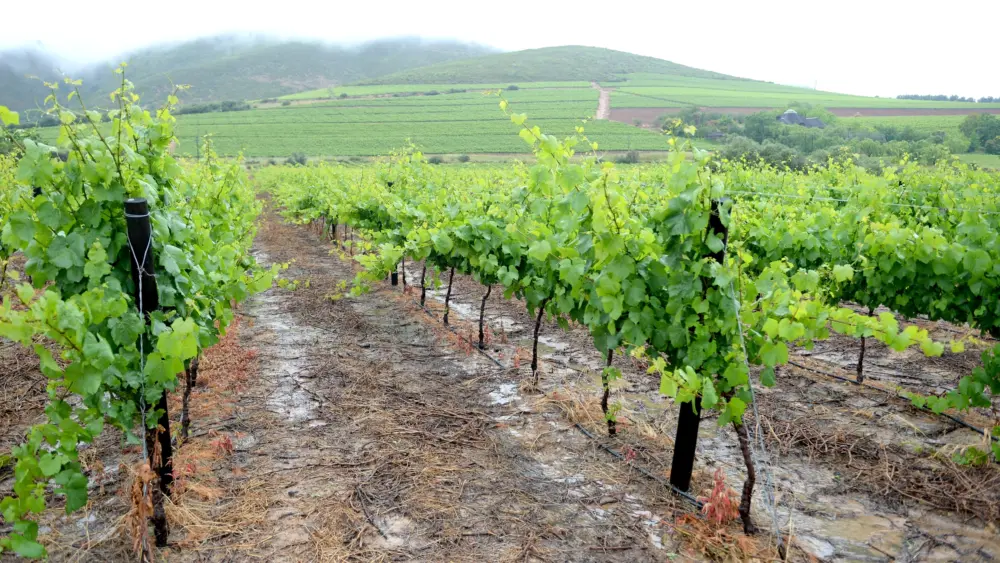
Given the avalanche of challenges in 2020—pandemic restrictions, numerous fires, multiple power outages, labor shortages and economic uncertainty—it’s often difficult to think beyond our immediate surroundings. However, it never hurts to pause for a moment and take stock of what’s going on around the world. This is as true in the area of wine production as it is anywhere else.
Every October, the International Organization of Vine and Wine—headquartered in Paris—presents its initial estimates for global wine production. The OIV’s methodology purports to include data from 30 countries, which represents nearly 85 percent of the world’s wine production. This year, somewhat surprisingly, wine production volume is expected to be only slightly lower than average.
When looking at global numbers, it’s important to remember that Italy, France and Spain produce about half of the world’s wine, whereas the United States makes only little more than 10 percent on average.
An overview of 2020’s global production highlights the volatility in the global wine markets and how economic uncertainty and climate change may become the two biggest variables affecting production in the coming years.
Weather conditions in Europe were warmer and dryer than normal, resulting in an above-average crop load of winegrapes, and by many estimates it is poised to make some of the finest wines of the region in decades. However, because of economic complications brought on by the pandemic, many producers opted to reduce the amount of wine they made, with some countries such as France, Italy and Spain spending hundreds of millions of dollars to distill existing wines into industrial alcohol to reduce stocks and make hand sanitizer. Even so, Italy and France had only modest changes from 2019 levels (-1 percent and 4 percent, respectively), whereas Spain witnessed an 11 percent increase in wine production
Australia saw their lingering drought conditions and massive wildfires take a toll, reducing wine production by 11 percent.
In the United States, initial estimates suggest a 1 percent increase over 2019 levels. These initial figures are widely expected to be revised downward when a full accounting of the impact of wildfires is evaluated. Some producers who had harvested grapes and even made wine will eventually find that those are tainted with smoke to a level that is unacceptable to consumers and therefore must be discarded.
Every state in America has a winery and makes wine (including Alaska), but because California produces about 85 percent of the wines made here, anything—fires, drought, recession—that affects the state has a disproportionate impact on the country’s overall wine industry. Drilling down a little further, Napa, Sonoma, Lake and Mendocino counties make up nearly 30 percent of the state’s total winegrape acres, but bring in more than 47 percent of the wine-grape revenue. Of course, grape revenue does not necessarily directly translate into wine revenue, but it’s a close approximation. In large measure, what happens within four smallish Northern California counties can impact nearly half of the overall U.S. wine market.
In China, drought, vineyard infestations and severe weather events have plagued their fledgling wine industry for the last couple years, reducing wine production in 2020 to only half of what it was in 2015. This is a little surprising because for the last decade, through a series of initiatives and focused investments, China largely transformed a country where wine wasn’t readily consumed even a decade ago into one with more than 40 million wine drinkers by 2018. At the same time, China turbo-charged its vineyard-development efforts so that it now has more acres planted in wine grapes than any other country besides Spain. Wine production wasn’t far behind, with China rising to the seventh-largest producer of wine on earth by 2018. Today, that may be changing, and it’s unclear how the country will respond to these new conditions. Watch for increased trade restrictions and tax increases as China looks to shore up its battered industry.
South America was hit hard by weather events, with Argentina seeing a 17 percent decline from the previous year because of severe El Niño conditions and Chile having a 13 percent decline due to drought.
Emerging from two years of extreme drought, South Africa recorded a 7 percent increase in production over 2019. New Zealand’s wine production also grew, expanding by 11percentand making more wine in 2020 than at any time in its history. Because weather conditions were not exceptional in New Zealand, it will be important to track the how and why for their impressive increase. Was this due to producers taking advantage of less competition from their nearby neighbor, Australia? Or, was this because the small country did exceptionally well at managing the COVID-19 crisis? Perhaps a little of both.
At times making wine can feel like every producer is on his or her own small private island. The truth is that global currents influence wine production at many levels, and this reality is likely only to grow in importance over time.
Author
-

Tim Carl lives, writes and teaches in Calistoga. He grew up in St. Helena and traces his Calistoga grape-growing roots back five generations. You can reach him at tcarl@northbaybiz.com.
View all posts



